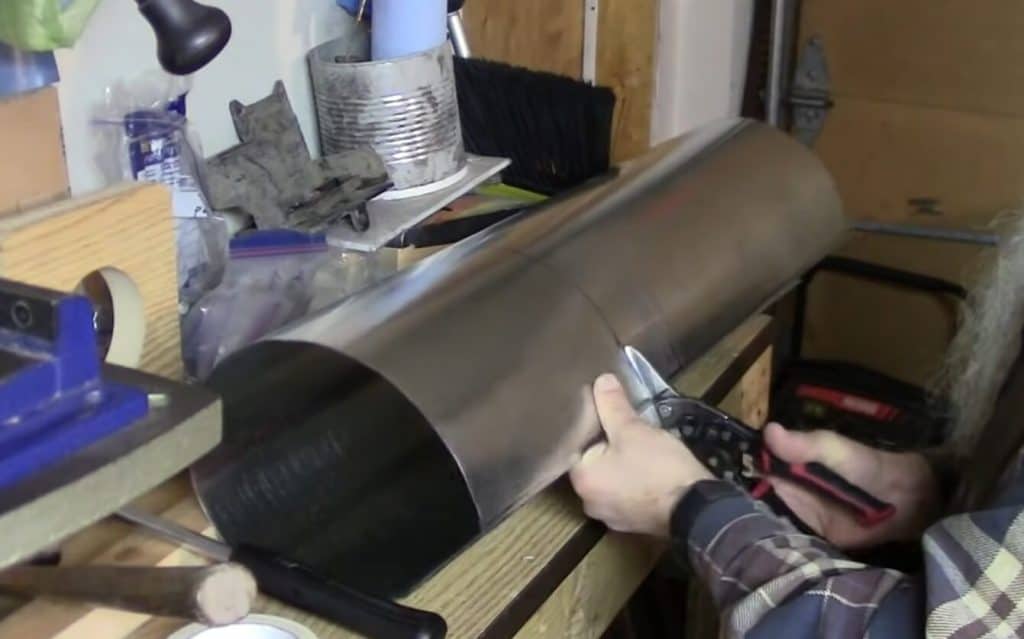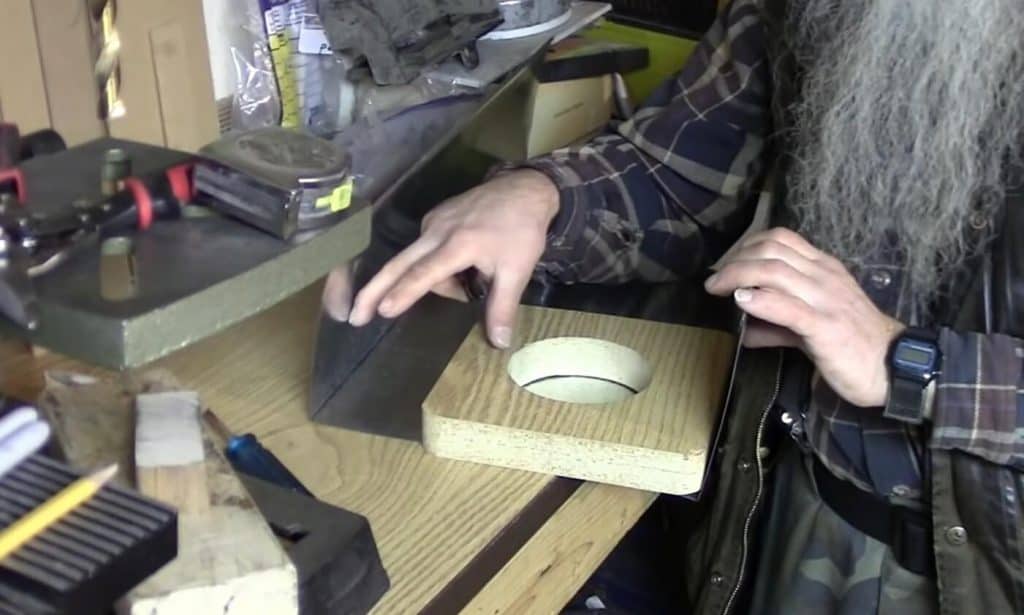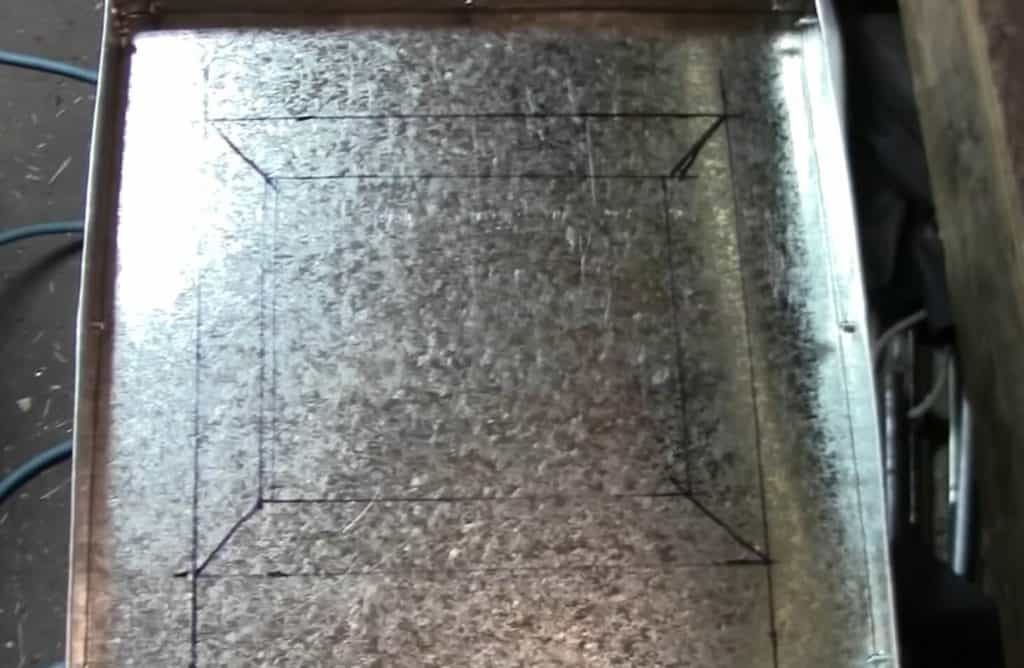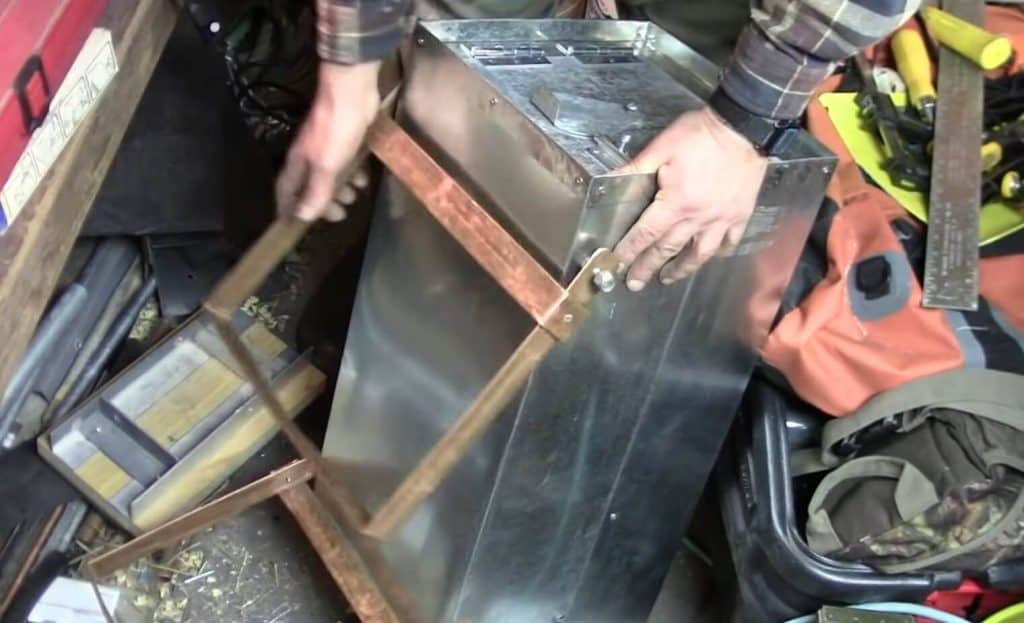DIY Hot Tent Stove Step-By-Step Tutorial (Video + List of Tools)
Camping is always a fun family activity. There’s something to admire in being one with nature. However, we still need a bit of luxury in our tents, especially once the winter rolls in.
Hot tenting is a game-changer when it comes to camping trips. With a little wood stove, you can keep warm and heat your meals without dealing with the hassle of a campfire.
In this post, you’ll find a DIY hot tent stove tutorial that’ll turn your tent into a cozy haven!
How to Make a DIY Hot Tent Stove
The measurements used in this tutorial end up making a 24×11-inch hot tent stove. We found it to be large enough for a small skillet and a pot of coffee, but not too large that it takes up space.
It’s okay if you can’t find the supplies in the exact size. You’ll just need to readjust your pieces accordingly.
Don’t worry; you’ll get the jest of it pretty quickly!
What You’ll Need
Being prepared is the key. Take note of all the stuff you need to buy and make sure everything is ready before you start.
Here’s a list of the materials you’ll need for this DIY project:
- Galvanized steel sheets (two 24×7-inch and three 15-inch cuts)
- 4-inch galvanized steel ductwork (pipe)
- 24×18-inch 28 or 27 gauge hardware cloth (spark arrestor)
- Wood log with a sharp corner (folding jig)
- Drill
- Tin snips
- Pop rivet kit
- C-clamps
- Two hinges
- Steel marker
- Bolts and nuts
- Hammer
- Heavy spring
DIY Hot Tent Stove
Now that you have all the materials, you’re ready to start working on the DIY project.
For visual learners, you might need to check out this brilliant video by Lonnie first. It’s a fairly easy tutorial that breaks down things to an intermediate level:
Once you have an idea of how the stove is made, check out the step-by-step instructions:
Cut and Fold the Body

If you’re using round ductwork, you’ll have to flatten it first. With a tin snip, cut out 24-inch or any stove length that suits you.
You’ll be working the top and the bottom separately. So, measure and mark five and a half inches from the edge to make the sides. You’ll be left with 11 inches in between.
Next, clamp down the steel to a flat surface. It’s important to make sure the clamp doesn’t budge.
Get out your folding jig and stand hammering the sides to a sharp 90° all across the stove sides. Repeat all these steps for the other half.
Open a Pipe Exhaust

Choose one half to be the top. This part will need an opening for the chimney pipe. It could be a bit off-center to increase the available space on the stovetop.
For this step, you should prepare two molds. One should be just as wide as the duct. The other should be smaller by half an inch or so.
Mark the exact diameter of the pipe on the steel with the first mold. The hole itself must be traced out with a smaller mold.
Use both molds to bend an inner lip into the opening. When you’re done, the steel should have a full-sized pipe hole with a bent edge of around half an inch for extra support.
Cut and Fold the Sides

Get the flattened stainless steel sheets and cut two 15-inch squares. Mark out two-inch squares in each corner and cut those out, too.
This creates two-inch edges that you can fold with clamps and rigs, just like you did with the body. Then, re-fold the edge in half to a sharp 90°.
On one of the stove sides, mark a door opening with a smaller border for a bent lip. So, if the entire door is a nine-inch square, use your tin snips to cut out an eight-inch opening.
Get out a short folding jig and clamps to fold down the one-inch lip to a right angle.
Make a Stove Door

On a new steel sheet, cut out the door itself and make it a bit larger than the opening. For the measurements used here, a 10-inch sheet would do just fine.
With a tin snip, open a small circular hole in the door. Then cut a small tear-drop flap on another steel plate. The tear-drop plate will work as a flap for the air intake hole through the door.
Drill holes at the top of the tear-drop and the door frame. The flap should stay in place with a double-nutted slide and a heavy spring.
Use two hinges to attach the door to the stove side with the door gap. Use any latch system to keep the door closed.
Assemble the Parts
Get the two large stove halves and close them over. If you bought ductwork with connector sides, this process would be much easier. If not, then weld them shut.
Insert the sides into the rectangular frame you just sealed. Make sure you press all the edges with a sledgehammer. This smooth seal reduces air leakage.
Place the pipe in the opening on the top. Then, you’ll just need to go over every seal with pop rivets. Add as much as you can for extra durability.
Insert the Legs

On the bottom half of the stove, insert four bolts and nuts, two near every end. These will keep the legs foldable.
To make the legs, weld aluminum sheets or rods into the desired length. Then attach them to the bolts and test the stability of the stove.
Burn Out the Galvanization
Since we’re using galvanized stainless steel, it’s crucial to operate it in an open space at first before getting it into the tent.
Keep in mind that the galvanized coat can be potentially toxic. So, you’ll want to burn it out and make it safe for use.
Add Modifications
At this point, all the main parts of the stove are ready to go. If you would rather keep it simple, skip this step.
Here are some modifications to consider for the stove:
- Make a sleeve out of the hardware cloth and use it as a spark arrestor over the chimney
- Add a steel baffle inside the stove to direct the heat to the top
- Use a false bottom using steel sheets with small legs
- Attach a side shelf for more storage space
Frequently Asked Questions
Check out some of the frequently asked questions regarding hot tenting:
Q: Is hot tenting dangerous?
A: Operating any combustible stove in a closed space can be dangerous. What matters is knowing the safety precautions you need to follow.
- Use spark arrestors and baffles to prevent the tent fabric from burns
- Burn the galvanized metal first in an open space
- Never spray any aerosols inside the tent
- Put a fire-proof mat under the stove
- Make sure you have adequate ventilation
- Avoid placing the burning stoves near the tent walls
Q: What type of tent is suitable for hot tenting?
A: Hot tents are designed specifically to accommodate a portable wood stove. They have extra vertical space and a ventilated top to let the smoke out.
The walls of commercial hot tents are typically insulating materials to keep the warmth inside. That makes them ideal for hot tenting.
We wouldn’t recommend using a stove inside just any camping tent. Most of those are made of nylon that will melt very quickly with the heat of a burning stove.
Q: Is a DIY hot tent stove expensive to make?
A: The good thing about DIY projects is that you get to control the budget. Consider all the options and compare the costs to a pre-made one; DIYs are generally cheaper.
If you want to cut down on the costs, go for smaller scales. Even a mini stove will make a difference in your camping experience.
Q: What goes in the bottom of a barrel stove?
A: Some people like using bricks to line the bottom of wood stoves for extra durability. The size of our DIY hot tent stove could be too small for a brick lining.
However, you can insert a false bottom. It’ll do the job without taking much space. Just attack tiny one-inch legs on a sheet of steel and put it on the stove.
Q: How long does a hot tent stove burn?
A: The exact time will vary depending on the stove side and the stocking material. We would estimate a burn time of seven hours, give or take.
To get the stove to burn longer, use well-seasoned hardwood. Make sure there’s enough air intake into the stove.
Keep in mind that wood combustion stoves are already more efficient than regular campfires.
Q: Can you improve the efficiency of a hot tent stove?
A: Using modifications like spark arrestors, baffles, and false bottoms can help increase the efficiency and safety of your stove.
In the end, try to keep your expectations realistic. It’s a highly portable, affordable, and easy-to-make stove. It works fine for basic warmth and heating food, nothing too fancy.
Final Thoughts
If you’re a wild spirit who loves taking days out in nature, winters must be partially harsh on you. You’ll be tempted to stay back home and ditch the camping trip.
But you don’t have to let the winter spoil camping for you. Get crafty with your own DIY hot tent stove and enjoy a warm, snug hot tenting experience!
source https://gonecamping.net/diy-hot-tent-stove/
Comments
Post a Comment